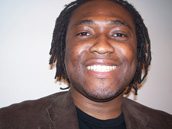Art
Suzie Veroff

007
Of Nature, Art and Socialization
Patrick Iberi in conversation with Susie Veroff
Patrick Iberi: Your work is imbued with a certain organic impulse, and it appears to me that your entire oeuvre is borne out of this. As a guide, what informs your art beyond the aesthetic appeal?
Susie Veroff: I have always been drawn towards biological naturalism as a way of representing literally or symbolically the magic of life. These sources have offered me paths for artistic research and a reliable stimulus for visual language. Natural objects as inspiration can be transposed or detached from their original context and then placed in new formal or spiritual environments to create new meanings or contrasts. Linear drawings, supple and vibrant, also serve as trajectories to and from my own subconscious and imagination. In my quest for meaning in all this I seek to project a socially shared yearning for a return to nature and our own senses and a certain fertility/eroticism inherent in that. On a more eco-political level, art that represents that human place within a natural environment has been threatened ever since early industrialization in the eighteenth century. Our relationship to the natural biological forces of life has been estranged by mechanization and the growth of materialistic markets. To combat this tendency, I create a sort of sensual symbolism, at times surrealistic or dreamlike, that has organic, naturalistic templates as simple scripts for exploration.
P.I.: I have just read your artist’s statement and straight away I would like you to explain in concrete terms, what you mean when you talk about the transformative potential of art through its magical connection to the unknown, and the senses?
S.V.: Art provides us with a way of seizing, holding, and transforming human sensorial and emotional experience first into memory, then into expression, and lastly from material into form. This complex process is often multi-dimensional and relates to the magic of art in a more pre-historical sense, as it tries to make meaning out of physical or social realities that sometimes make no sense or are on the edge of the void of unknown and frightening territories. Art raises us all up from a fragmented state to a state where we can possibly commune with others within a shared experience or in sharing our unique experience. Art invites the individual “I” to identify with another’s perspective and maybe even with a larger group that seeks understanding and opportunity for change or growth within an often disturbing and alienating social world. As we connect to art we potentially open our spirits to the collective unconsciousness of humanness and the possibility of a new and better world.
P.I.: I’m inclined to think you might be a free-spirit of some sort, if you don’t mind me saying. With backgrounds in both the liberal and creative arts, is there a story behind your career and what has been the major challenge?
S.V.: You are right; I have always been a free spirit actually. I grew up in an academic family with unusual parents who were very open-minded and creative as well as being very politically avant-garde. I was encouraged at an early age to be who I wanted to be, even if it was multi-facetted, but also to be socially aware and engaged with the world. For me there has always been a dilemma between the desire to lead a purely creative life and to evolve in either the intellectual world or the socially engaged world that had been so familiar and comfortable for me. The trick has been balancing these tendencies in a way that does them justice and is fulfilling and nourishing. I am a teacher as well as an artist and I love it. I think that a creative and rebellious approach to pedagogy has always inspired me professionally, even in my artwork or writings. My challenge in all of this is devoting the time and energy necessary to doing something of real value, for others and for myself.
P.I.: Giorgio Vasari’s contextualized study of history of the arts published in the mid sixteenth century profiled the lives of Painters and Sculptors. The spin-off has seen this group of artists portrayed, over the years, as creatively superior to sojourners into the world of applied arts for instance. From your perspective as an Art teacher, what is art if it does not serve a utilitarian purpose?
S.V.: As an art teacher, I have largely focused on three purposes of art. First, I try to engage the students in a process of learning art as a language, a visual language that has its own vocabulary and structure that has evolved through the ages and continues to evolve. This language of colour, line, form, space, texture, etc., is only useful if someone has an experience, emotion, memory, impression or something of meaning that will be represented by it.
The purpose of art as language, and at times universal language, is to communicate from someone’s internal space to the external world, therefore sharing humanness. Secondly because I work with young adults, age seventeen to twenty years old, another purpose of art is to heal. I am not really talking about art therapy here or healing serious maladies. Just the simple act of creating something artistic has a healing capacity for ordinary, confused, distraught, nihilistic, and inexperienced young people seeking meaning in an often materialistic, individualistic, and alienating social world; and it is an easy entrance into an exploration of self-knowledge that is helpful in the process of coming to terms with oneself.
Finally, I feel that art serves a complex purpose of making people feel power from within and that can be transformational. As any artist creates, either young or old, they grapple with many levels of problem solving that if taken to full term will allow them to see a projection of themselves that is outside of them and that stands up on its own. Creating something has the potential of offering a visible change to any environment. As far as the superiority of fine art versus applied art is concerned, I would have to say that they are really intertwined. Much of art is only craft, and much of craft is filled with art. What makes the difference is the intention, the context, and the implication of the creator. A cup can be a work of art and certain paintings can be as mundane as dish racks.
P.I.: You are a founding member of La Espiral Rota, can you talk about the activities and the relevance of this movement?
S.V.: La Espiral Rota is a small collective of artists, musicians, and writers from diverse backgrounds that hope to help each other gain visibility within a society that is more focused on dominant culture manifestations. The broken spiral is a reference to the constant growth and change in life that becomes interrupted (broken) when we observe only part of it because it is open-ended and infinite. It is not really broken—just partially broken. Our work has been to organize and produce expositions, poetry readings, happenings, and political conferences in a, albeit, very underground way. We have used a small vacant apartment as a centre for these events and continue to promote artists that need a place to present their work. We have no funding, relying on contributions, sales, and cooperative collaboration.
P.I.: Give us a background to your intriguing sculpture piece, Baton de shaman de Mimi; a cracked animal skull, a rock, a crop of human hair and other indefinable materials are all held up together by a wooden human form. Is there a context to this work other than its formalist interpretation?
S.V.: I made this shaman stick for my daughter Mimi who was 16 at the time. She was going through the confusing and sometimes painful adolescent period and I wanted to create a piece for her so that she might believe in her own amazing powers inside herself. The hair is hers; she donated it willingly. I think she understood why I was doing this and enjoyed it, although she admitted she was a little afraid of it. I am very connected to native spirituality because of my own personal heritage and also in my continual respect and love for the self-determination of these fragile but vibrant cultures. I have often made amulets, alters, travelling protection bags, and other such creations to either protect or reinforce my loved ones. All the objects on the piece I found while exploring nature, as always, an important source for my work. Each part has a significant symbolism, but as a whole invites the user to be fierce but graceful.
P.I.: So are you saying that nature should be at the service of art in more ways than one?
S.V.: I would say that basically artists start out wanting to imitate nature to some extent; they try to recreate the world as they would like to imagine it. Through observation and more humble musings, art can use nature in so many complex ways—as a source of themes and inspiration, as a source of energy, materials, spiritual connection, tribute to understanding the elements, and as a basis for design in general. This is not to mention the reverence that many artists hold for nature in tandem with their desire to conserve or protect it. One of my favourite artists, Andy Goldsworthy, seems to demand of us that we stay still and explore our senses long enough to be able to appreciate the details of a world so beautiful and fantastically multi–layered if we must learn how to be better humans.
P.I.: Form as an element of art is convoluted in some of your work, notably Rëver aux loups à Cuba. What is the effect of the intricate contours in that particular piece?
S.V.: This piece is a visual interpretation of a very scary, but also funny, nightmare I had. I wanted to represent the interactive boundaries between dream and reality, between the beautiful and ugly, the weird and ordinary, and specifically in this case, the frightening and comical. In my subconscious dream world, I seem to deal with these dichotomies often. The intricate contours are related to the organic nature of imagination and how a scary dream about being attacked by wolves turns into something sexually human and then extremely funny. In my nightmare, a menacing and uncontainable animal transforms into human and then into a harmless silly person making a joke. The contours literally create sections because the dream had so many “acts” and all in different scenes.
P.I.: Would you say there is more to visual arts as a form of representational knowledge? By this I mean, is it possible to unravel any insight within the circumscribed process of experimenting with colour, texture, shape, composition, etc?
S.V.: Representational knowledge involves gaining control over the physical, material world and learning what it is all about. This control can be technical, mechanical, or abstract. Almost any skill implied in learning an artistic technique involves gaining mastery over materials, tools, mechanical workings, and technological manipulation. As artists, we are all working towards achieving representational mastery of the material world. As we interpret these representations, we can see patterns and understand meanings. Through simple interpretations, we uncover meanings that are sometimes invisible and inaccessible through other channels. These meanings are communicated through forms of visual language: colours, forms, graphic expression, and pictorial organization, only to mention a few. Through knowledge of culture and history, both past and present, the history of art and other art forms, phenomenology, symbolism, science, mathematics, psychology, and politics we gain a rich basis for interpreting visual forms of representational knowledge. One just simply has to experiment with what one knows to feel and understand what is being represented.
P.I.: What is your take on recent technology and its impact on art?
S.V.: I’d like to use printmaking as an example, since that is my background. Printmaking has gone through many technological changes over the last 500 years with the invention of the press, photography, modern commercial printing processes, and now the whole digital revolution. All of these “advancements” are truly just new approaches to building images and each has something to offer. Each technique is not an end in itself, just a new tool to either aid or inspire artists or sometimes, unfortunately, to bog them down. In the case of the digital revolution in regard to printmaking, there are many fascinating interfaces that are coming into fruition right now. I find it very exciting, but also challenging. The idea is to not lose direct contact with well-loved materials like ink, paper, and the matrices or plates and to keep images fresh and alive. I really cannot wait to see how this new era will evolve. Personally, I have not yet mastered my way of using these mew mediums, although I have been experimenting a lot. I’ve discovered that the only problem is the extensive knowledge necessary to be able to navigate in these new techniques. But this is true of anything new and evolving. The point is to stay close to the soul and not get too mechanistic, then I am sure art can survive.
P.I.: Looking back, are there any special moments in your career you might want to share with MTLS?
S.V.: Being a fairly eclectic artist, because of my natural tendency to do a lot of research and explore new approaches, I think one of the moments that was most special for me was when I started discovering artists, that were very successful, who appeared to be pretty eclectic too, some examples: Louise Bourgeois, Julian Schnabel, Anselm Keiffer, Kikki Smith. I had formerly felt that I needed to be very consistent, and even repetitive, and was not able to do that easily. These artists gave me new energy to pursue my way of doing things. Then I discovered that I could give life to my ideas in many forms: for instance, one of my pieces (a wall installation) called cultural hybridity uses a typewriter and a long printed page with the circulatory system (blood) as a background for quotes of comments that people have made to me through the years about my difference (name, mother tongue, accent). This was a way to comment on the awkwardness, and often pain, of not being accepted in a supposedly pluralistic society. The mindset was, if it is like this for me, a white woman, what about others whose differences are even more noticeable? This piece was a bit of a breakthrough for me as I felt I succeeded finally in putting some of my socially conscious ideas into a visually coherent context. And on the strength of that, doing cross-disciplinary work of any kind especially pleases me. An example is exploring how academic work justifies the importance of art or finding ways of demonstrating that art is a form of social change. I also enjoy the process of preparing and creating any solo exhibition as a project meant to convey new personal ideas. For me it is more a way of demonstrating what my “world” can look like rather than a commercial proposition.
P.I.: So what lies ahead in the near future?
S.V.: In two years, I hope to take a fairly early retirement and be able, at last, to devote myself full time to my own projects, both artistic and cross-disciplinary. I have always been a part-time artist, which has sometimes taken a toll on my self-esteem, despite my continual enjoyment and engagement with teaching art. The future seems open and filled with opportunity, but even in the near future I feel the pull to have a solo show in the next year. I have been working on two projects that both involve using digital methodologies: one that is very personal related to the death of my father and his experience in hospital, and the other is a series of Chakric lamps I am designing, using an earlier work as a model.
PI: Thank you Susie, and best wishes in every regard.
S.V.: Thank you Patrick.











